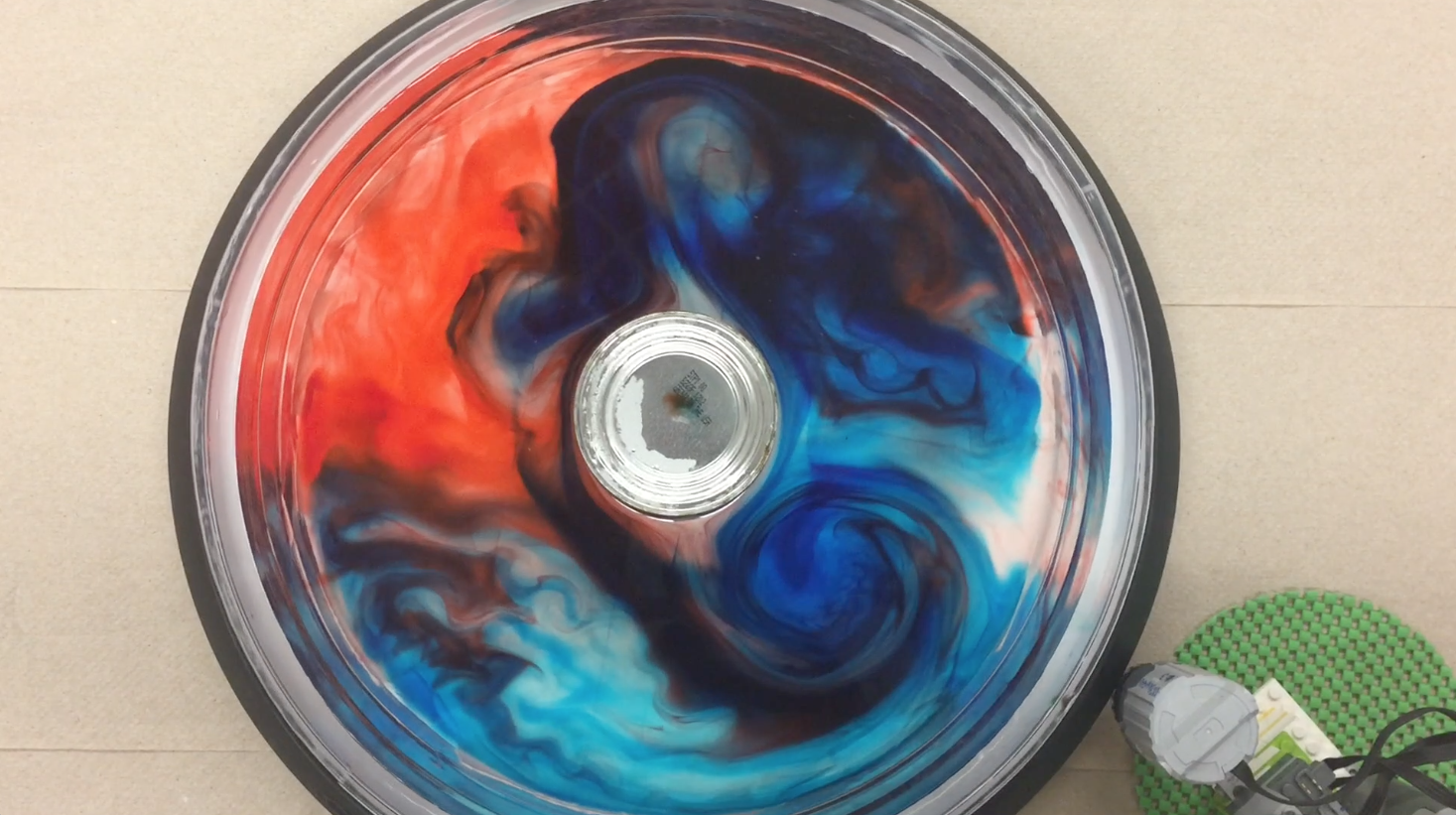- Sat 20 April 2019
- events
- Norris Khoo
- #symposium, #outreach, #presentation

On April 20, 2019, Norris and other members of the SPINLab visited sunny Santa Barbara to present at the thirteenth annual SoCal Fluids student symposium. Graduate students from throughout Southern California met to share their research in diverse fields of fluid dynamics. For his presentation, Norris took the opportunity to describe the utility of the DIYnamics table for STEM education. We believe that physical models provide a tangible connection to the large scale processes impacting our atmosphere and oceans, helping students develop a scientific approach to the world.

Overhead view of baroclinic instability in action. Look at the eddies towards the top and bottom right of the image!
Norris provided an overview of his favorite experiment, baroclinic instability (please watch our video for a more detailed guide). Begin the experiment by placing a frozen can in the middle of a rotating tank of warm water. The cold source and warm body, analogous to the Earth’s poles and lower latitudes respectively, create a temperature gradient. The blue water, chilled by the cold source, is dense and pushed out as the tank rotates. Meanwhile, the red water, heated by the warm body, migrates to the center to fill the void. This process continues and results in the formation of large circular structures or eddies. Baroclinic instability defines much of the large scale behavior of Earth’s atmosphere in the northern hemisphere.

A visit to the beach after the symposium
Thank you to the SoCal Fluids 2019 organizers for providing the opportunity to share our project! And thank you to other participants for their interesting presentations and valuable insight regarding improvements for our material!
